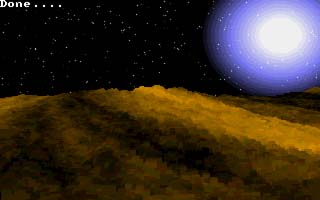

![]()
By Alias
|
Alright, has everyone here heard of a landscape engine? No?!?! Well, we'll see about that! Last issue we covered voxels, which are 3D versions of pixels, and can be used to create stunningly high-detail sprites without too much overhead or loss of speed. As nice as they are, they are not as fast as they could be if we remove some abstraction. | Voxel-based landscapes... |
|
The voxel model we presented last time was an incredibly general model - too general for a lot of purposes, in fact. If you're making, say, a flight sim, or a game like Delta Force, you want to have a big, broad voxel map the size of Rhode Island, but you don't have that much memory. The ability to have true-3D voxels is useless, so if we could just find a way to do a height-map, we could completely forget our previous method and have whatever kind of terrain we want. Wait a minute! We CAN do a height map! Look at programs like 3D-Lands and the voxel.bas. They are prime examples of simple height maps at work. Since there are so many programs like that out there, I will not bother to write one. Have a look at them and see what you think. Keep in mind that there are many different kinds of landscape voxels. I will go through a simple list and description of the most prominent kinds:
|
|
Check out this 3d landscape! |

|
Phew! that's a lot to cover. I know I said I would cover list voxels this time, but I have been awfully busy, and have not been able to prepare. As for the DQB version of the voxel editor, I won't be doing it. All of the mail I recieved about it said that I should not port it to directQB, and since there is no demand for it, I will just let it stay the way it is. See you next time, with list voxels, and finally, in the fourth installment, isometric projection!
| Download the voxel landscape generator |